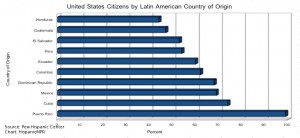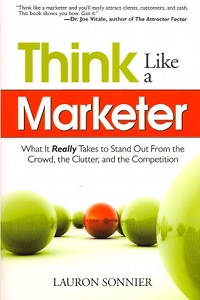Posted by Elena del Valle on November 17, 2009
Information provided by our Event Partner

Conference and Expo Chicago, IL December 7-11, 2009
From Social Media to Local Search to Video SEO, Search Engine Strategies Chicago puts you in front of the experts who will help you sort which technologies and channel will take you to the next level and which are just hype.
Search Engine Strategies is the pioneer of educational conference series in search engine marketing. It’s the venue where the industry visionaries and thought-leaders gather each year to discuss the newest trends, share insights, and present the strategic action plans you need to grow your business.
Sessions include:
SEO Through Blogs & Feeds
Duplicate Content & Multiple Site Issues
What’s the Link Between Search and Social?
Online PR: Where to Next?
Search Analytics
See more at www.SearchEngineStrategies.com/chicago.
HispanicMPR readers receive a 15% discount when using HMPR15.
Posted by Elena del Valle on November 16, 2009

The Signal album cover
Photos, song: HardKandy Records, Inc.
Singer Eva Natal, whose father is from Spain, considers herself Latina. She describes her music as an eclectic mix of alternative rock, electronica, and trip hop. Her self written lyrics are designed to intrigue and keep listeners guessing whats next. She plays guitar, keyboards, violin and bass.
Her debut album, The Signal, on HardKandy Records Inc. is scheduled for release in early 2010. Late last month the record label made a special fan track available. Scroll down to listen to Pulse from The Signal.

Singer Eva Natal
Born March 28, 1987 Natal is described as a very quite and polite girl who spent most of her time reading, dancing in front of her mirror, fearfully playing sports alongside girls with way too much aggression, and practicing the violin.
By her teens she began expressing her likes through fashion and dance and stopped taking violin lessons. As a young adult she rebelled against the what she considered suppression in a private catholic school environment by dropping out of college, enraging her parents; and pursuing a life of what she calls a struggling creativist through various stabs at the modeling and dance industry, and most recently as a budding recording artist. Her 12-track album should be available at major online retailers next year.
Click on the play button to listen to Pulse from The Signal album
Posted by Elena del Valle on November 13, 2009

Los Simuladores
Photos, video: Cinelatino
Sony Pictures Television (SPT) will premiere Los Simuladores, a Mexican series, in the United States on November 15 exclusively on Cinelatino, a Spanish-language movie channel. Based on an Argentine series of the same name, Los Simuladores centers on the adventures of four men operatives, trained and prepared to carry out sting operations. Scroll down to watch a preview of Los Simuladores in Spanish.
Shot in high definition, the show features a cast of Mexican actors, including Tony Dalton (Matando Cabos, 13 Miedos, Sultanes del Sur), Arath de la Torre (La Parodia, La Hora de La Papa), Ruben Zamora (7 Dias, Pasion) and Alejandro Calva (The Producers, The Pillow Man, Sin Memoria). They dedicate their efforts and skills to solving human-interest conflicts for their clients, including troubled marriages, dangerous loan sharks, swindling agents and broken hearts.
The team features Mario Santos (Tony Dalton), the brain, who comes up with the plans; Emilio Vargas (Arath de la Torre), the chameleon, who plays different characters in the operations; Pablo Lopez (Alejandro Calva), the go-to man, in charge of logistics and technical aspects; and Gabriel Medina (Ruben Zamora), the researcher, who finds the necessary information for Santos to come up with the plans.
“This is the highest-caliber premium series currently available to U.S. audiences in Spanish, and we’re excited to offer it exclusively to our viewers,” said Jim McNamara, chairman of Cinelatino. “The superb production values, excellent cast, and compelling story lines make this THE must-see series of the season.”
The series also features Natalie Esperon (Por un Beso, La Esposa Virgen and El Nombre del Amor), Rafael Amaya (Las Dos Caras de Ana and Amor Letra Por Letra), Silverio Palacios (Morirse en Domingo, Amor a Morir, Matando Cabos) and Adal Ramones (Otro Rollo con Adal Ramones).

Los Simuladores
In late 2008, Los Simuladores debuted in Mexico on Televisa and throughout Latin America on Sony Entertainment Television. After a successful first season, a second season of the series began production earlier this year.
Los Simuladores is the second premium series to air on Cinelatino. The channel premiered the series Tiempo Final in the spring of 2009. The first two episodes of Los Simuladores are scheduled to premiere on Cinelatino on Sunday, November 15, at 7 p.m. EST and repeat at 11 p.m. EST (4 p.m. and 8 p.m. PT). A new episode of the 13 episode series will air every Sunday at 7 p.m. EST and will repeat at 11 p.m. EST (4 p.m. and 8 p.m. PT) during the season. Cinelatino plans to air Season Two in early 2010.
According to promotional materials, Cinelatino has more than 3.6 million subscribers on major cable, satellite and telephony providers throughout North America. Cinelatino offers Spanish-language programs and titles from Mexico, Latin America, Spain and the U.S. Cinelatino is jointly-owned by Grupo MVS, InterMedia Partners and Panamax Films.
Sony Pictures Television produces and distributes varied programming including series, telefilms, theatrical releases and family entertainment around the world and for every platform: broadcast and cable television, first-run and off-network syndication and digital distribution.
Posted by Elena del Valle on November 11, 2009

Kevin Wise, assistant professor, strategic communication University of Missouri
Photo: University of Missouri
People who search for information online are more likely to trigger greater emotional responses to unpleasant content compared to those who surf and encounter information more casually than those actively searching for it, according to a University of Missouri study funded internally and announced last week.
“If, as these data suggest, the cognitive and emotional impact of online content is greatest when acquired by searching, then Web site sponsors might consider increasing their advertising on pages that tend to be accessed via search engines,” said Kevin Wise, assistant professor of strategic communication and co-director of the Psychological Research on Information and Media Effects (PRIME) Lab at the University of Missouri. “How readers acquire messages online has ramifications for their cognitive and emotional response to those messages. Messages that meet readers’ existing informational needs elicit stronger emotional reactions.”
The results of the study were summarized in an article authored by Wise and Hyo Jung Kim. In the study, researchers, including Wise and two doctoral students, examined how searching for specific content versus surfing a news Web site affected readers’ emotional responses while reading news stories.
The researchers monitored participants’ heart rate, skin conductance and facial musculature to gauge their emotional responses to unpleasant news. The researchers found that unpleasant content triggered greater emotional responses when readers sought the information by searching rather than surfing. In future studies, Wise plans to study the effects of acquiring pleasant content on readers’ emotional responses.
The study, conducted among 92 participants over several months in 2007, indicates that information was better understood and remembered when individuals conducted specific searches for information. Participants came to the laboratory and selected/read news stories from a website (on a computer).
In a previous study, Wise tested the effects of searching and surfing on readers’ responses to images and found similar results. The study, “The Effect of Searching Versus Surfing on Cognitive and Emotional Responses to Online News,” was recently published in the Journal of Media Psychology.
The PRIME (Psychological Research on Information and Media Effects) Lab, part of the Missouri School of Journalism at the University of Missouri, is a research and teaching laboratory devoted to the study of how different features of media affect the way that people think, feel, and act. The staff conduct theory-driven, empirical research using psychophysiology and other behavioral science methods.
Target Latinos effectively by understanding how they shop
“Hispanic Holiday Shopping Patterns” audio recording

Manuel Delgado, CEO Agua Marketing, gives a presentation and participates in an extended Q&A discussion about
- Hispanic shopping patterns national survey
- Why Latino consumers may be more desirable than general market shoppers
- Hispanics holiday shopping patterns and behaviors
Click here for information on “Hispanic Holiday Shopping Patterns” audio recording
Posted by Elena del Valle on November 9, 2009

Hispanic U.S. Citizens by Country of Origin
Click on image to enlarge
While most people with an interest in Hispanic markets know that more than 60 percent of the United States Latino population is comprised of people of Mexican origin, few are aware of the breakdown by country of origin of the remainder. The remaining third come from Puerto Rico, Cuba, El Salvador, Dominican Republic, Guatemala, Colombia, Honduras, Ecuador, and Peru.
Gathering information on ethnicity and country of origin can be challenging and accurate results require additional time and effort for demographic researchers. For example, the concept of ethnicity and country of origin is in itself complex. Individuals self-describe their ethnicity and country of origin relationship when responding to U.S. Census surveys. However, country of origin may differ from country of birth and both may differ from ethnicity. In other words, two individuals from the same family and born in the same country may respond differently to the same question. One may indicate he or she is Latino and the other may not.
Some people born in Los Angeles identify their country of origin as Mexico; some New York natives may also self describe their country of origin as the Dominican Republic or Puerto Rico although the island is part of the United States.
At the same time, the percentage of United States citizens among Latinos varies by country of origin. For example, almost all Puerto Ricans (99.4 percent) are citizens. The groups with the next highest percent of citizens are Cuba, Mexico, Dominican Republic, and Colombia all with more than 60 percent United States citizenship rates, according to updates released by the Pew Hispanic Center on Latino population groups and their characteristics last month.
The Pew Hispanic Center, a project of the Pew Research Center, is a nonpartisan, non-advocacy research organization based in Washington, D.C. and funded by The Pew Charitable Trusts.
Posted by Elena del Valle on November 6, 2009

Photos: Smart Mother’s Guide
According to Planned Parenthood, the United States has the highest rate of teen pregnancies in developed countries. As much as 8 percent of the 4 million women who become pregnant each year may have high-risk pregnancies; and two-thirds of the women may have serious problems, including fetal death (National Center for Health Statistics, Obstetrics & Gynecology).
At the same time, as emerging markets grow these statistics become more relevant to them. For example, one in every four babies, or 25 percent, born in this country is the child of Latino parents. The rates of risky pregnancies are higher for African American and Latino women than for the general population.

Author Linda Burke-Galloway, M.D.
In The Smart Mother’s Guide to a Better Pregnancy: How to Minimize Risks, Avoid Complications, and Have a Healthy Baby (Red Flags Publishing, $15,95) Linda Burke-Galloway, M.D., a board certified specialist in obstetrics and gynecology, shares information on pregnancy issues for soon-to-be moms, including issues affecting Latino and African American women.
The book, five years in the making and published in 2008, has 14 chapters and an extended appendix. Convinced that physicians have lost control of their profession, Burke-Galloway sets out to inform her readers in the hopes that pregnant women across the country will take matters into their own hands to better their odds of a healthy pregnancy by taking proactive steps toward a healthier pregnancy.
Before attending medical school Burke-Galloway studied social work at Columbia University. In 1981, she graduated from the Boston University School of Medicine. She has devoted much of her time to community service and public health, traveling across the country to communities in central Florida, Harlem in New York, a Lakota Native American reservation in South Dakota as well as in Ghana, Senegal, and Cote d’Ivoire.

Click here to buy The Smart Mother’s Guide to a Better Pregnancy
Comments:
Filed Under: Books
Posted by Elena del Valle on November 5, 2009
Information provided by our Event Partner

Posted by Elena del Valle on October 30, 2009

Think Like a Marketer book cover
Lauron Sonnier, a Houston, Texas based marketing advisor, believes a company can have a strategic advantage in business by thinking, and acting on, marketing thoughts. To make her point she wrote Think Like a Marketer What It Really Takes to Stand Out From the Crowd, the Clutter and the Competition (Career Press, $15.99).
She wrote the book to demystify marketing, she says in the introduction. She hopes to help business executives and owners act with “a level head and fresh perspective” on marketing opportunities that are within easy reach. In her mind, it is essential to understand and think like marketers in order to take advantage of everyday marketing opportunities that are otherwise passing readers by without notice.
The 223-page softcover book is divided into twenty one chapters and six parts: Getting Into a Marketing Mindset; Stir the Pot; Standing Out from the Crowd, the Clutter and the Competition; Establish the Systems That Make Marketing Happen; Talk Like a Marketer; and Keep Marketing in Motion.
Sonnier is president of Sonnier Marketing and Communications, Inc. and has 20 years of marketing experience. In the past, she has worked in television, public relations, and advertising. The Louisiana native is also a public speaker and trainer.

Click here to buy Think Like a Marketer
Posted by Elena del Valle on October 23, 2009

Lo Que No Digo Cantando (Beyond The Music) book cover
Photos: Grupo Nelson
Ricardo Montaner, known for his Spanish language singing and composing, shares insights about special moments in his life, his religious convictions, and the role God plays in his life in Lo Que No Digo Cantando (Spanish for Beyond the Music), his first book, published last month (Grupo Nelson, $14.99). The launch took place simultaneously September 8, 2009, on the singer’s 52 birthday, in Spain, Argentina, Colombia, Mexico, and the United States. A companion website, loquenodigocantando.com, went live in time for the book launch.
Montaner, known for his firm roots in the romantic ballad tradition, was born in Buenos Aires, Argentina and raised in Maracaibo, Venezuela. In the Spanish language book, he concentrates on the experiences that helped shape his personality, paying particular attention to an incident that took place in a hospital in Montevideo, Uruguay where an encounter with a little boy affected how he sees the world.

Ricardo Montaner
In the book, he also discusses his family life and his formative experiences. The 219-page hardcover book includes several pages of black and white photos of the author with friends and acquaintances.
Montaner has worked to better the lives of children in Latin America and the United States. In 2007, he was presented with the Espiritu de Esperanza (Spirit of Hope Award) at the Latin Billboard Awards. He was also named Ambassador of Good Will for Latin America and the Caribbean by UNICEF. The singer has been married for twenty years to Marlene who also produces his video clips. The Miami residents are the parents of five children.

Click here to buy Lo que no digo cantando (Spanish Edition)
Comments:
Filed Under: Books
Posted by Elena del Valle on October 19, 2009

Julio Chavez, Cecilia Roth and a victim in Epitafios
Photo, video: courtesy HBO
When the second season of Epitafios, an HBO Latino and HBO2 suspense series in Spanish, began last month detectives Renzo Marquez (Julio Chávez) and Marina Segal (Cecilia Roth) were tracking another killer. This one replicates previous slayings as if they were works of art and photographs the crimes for posterity. Scroll down to watch a short video of Epitafios.
The 13-episode second season, written by twin brothers Walter Slavich and Marcelo Slavich, is scheduled to air Fridays at 10 p.m. ET/PT on HBO Latino and Tuesdays, at the same time, on HBO2 with English subtitles. The series will also be available on HBO On Demand in Spanish with English subtitles.
Cast members for the series, filmed Buenos Aires, Argentina, include: Julio Chávez as Renzo Márquez; Cecilia Roth as Marina Segal; Leonardo Sbaraglia as the murderer; Daniel Fanego as Mazzoni; Alejandro Awada as XL; Natalia Lobo as Gabriela Friedman; Villanueva Cosse as Marcos Márquez; Nahuel Perez Biscayart as Pablo; and Carlos Belloso as Díaz.
In 2005, a 13-episode season of Epitafios first aired on HBO Latino in the United States. In 2006, the series had its HBO Signature debut with English subtitles. The series is described as HBO Latin America’s first fictional dramatic series written and filmed in Latin America, by Latin Americans, and for the Latin American audience. A suspense story inside a love story, the Spanish-language series made its TV premiere on HBO Latin America in 2004.
Also filmed in Buenos Aires, the first season followed the cat-and-mouse game between a morose police detective (Julio Chávez) who was looking for a reason to live and a psychotic serial killer (Antonio Birabent) who was bent on revenge.
HBO Latino is a dedicated Spanish-language premium channel targeting Spanish speaking Latinos in the United States. The channel features U.S. premieres of Spanish-language series, music videos, original short-form programming, films, and documentaries from North America, Latin America and Spain. HBO Latino also shows Hollywood movies, HBO boxing and HBO original programming from the network’s main channel in Spanish.



























